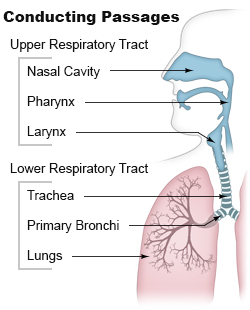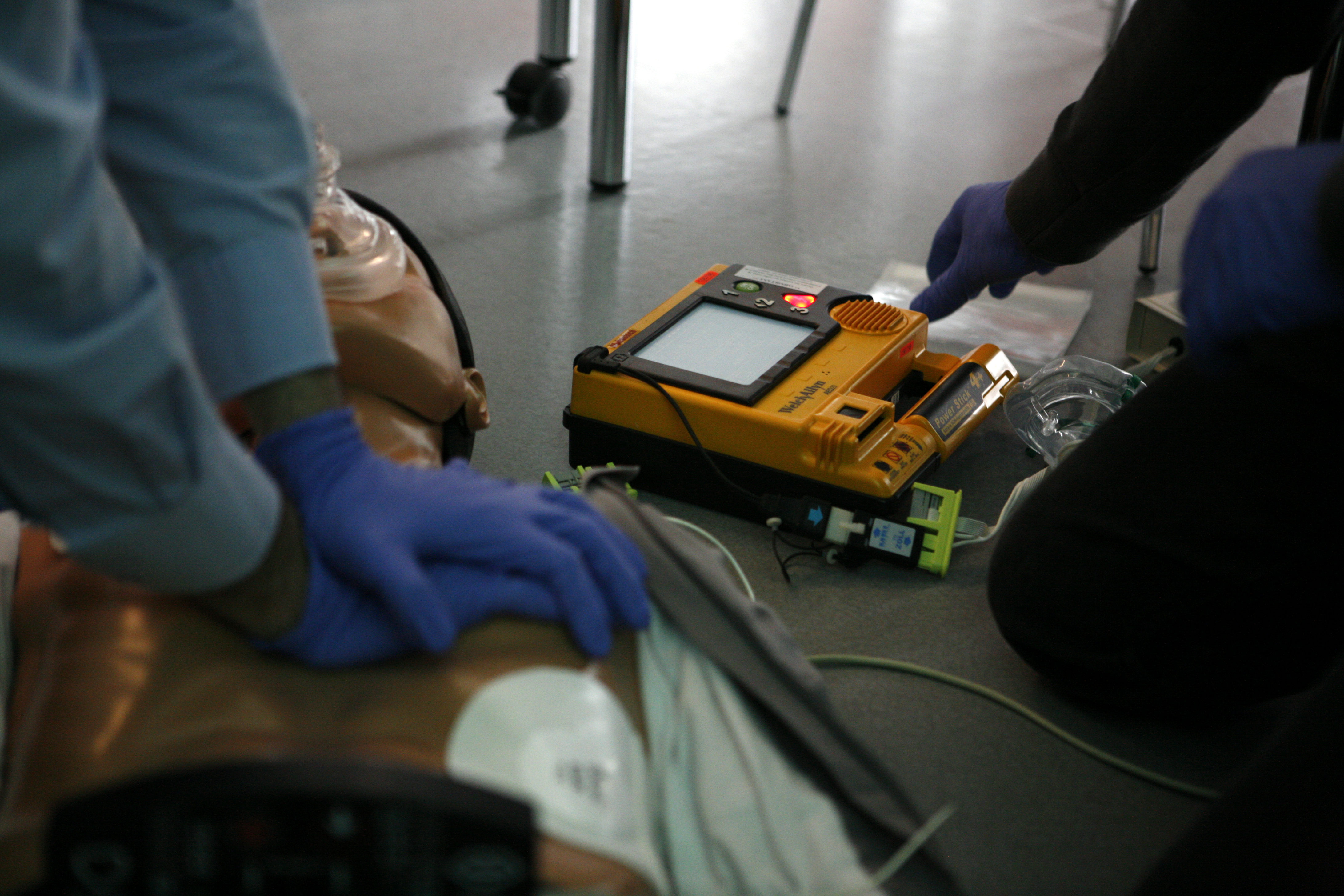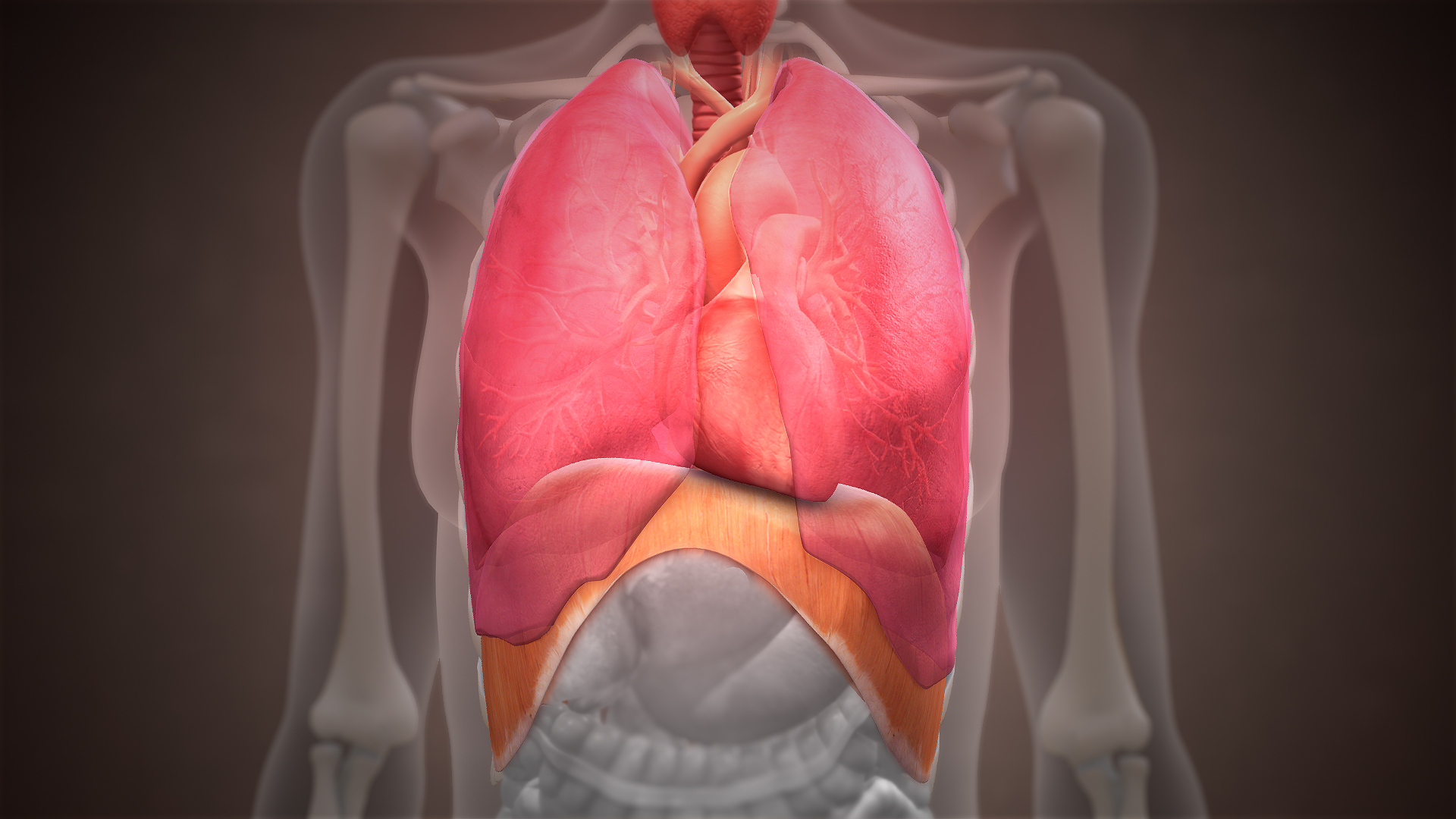|
Basic Airway Management
Basic airway management is a concept and set of medical procedures performed to prevent and treat airway obstruction and allow for adequate ventilation to a patient's lungs. This is accomplished by clearing or preventing obstructions of airways. Airway obstructions can occur in both conscious and unconscious individuals. They can also be partial or complete. Airway obstruction is commonly caused by the tongue, the airways itself, Foreign body, foreign bodies or materials from the body itself, such as blood or vomit. Contrary to advanced airway management, basic airway management technique do not rely on the use of invasive medical equipment and can be performed with less training. Medical equipment commonly used includes oropharyngeal airway, nasopharyngeal airway, bag valve mask, and pocket mask. Airway management is a primary consideration in cardiopulmonary resuscitation, anaesthesia, emergency medicine, intensive care medicine and first aid. Evaluation Conscious If the patient ... [...More Info...] [...Related Items...] OR: [Wikipedia] [Google] [Baidu] |
Airway Obstruction
Airway obstruction is a blockage of respiration in the airway that hinders the free flow of air. Airway obstructions can occur either in the upper airway or lower airway. The upper airway consists of the nose, throat, and larynx. The lower airway comprises the trachea, bronchi, and bronchioles. Airway obstruction is a life-threatening condition and requires urgent attention. Upper airway obstruction Causes The causes of upper airway obstructions can be acute or chronic. Acute causes of upper airway obstruction include foreign body aspiration, blunt trauma to the neck, infection, and swelling due to allergies or other inflammatory conditions. In children, viral infections such as croup or epiglottitis are frequent causes. Adults are more likely to experience obstruction from enlargement of the tonsils or vocal cord paralysis. Obstructive sleep apnea is the most common chronic cause of upper airway obstruction. Symptoms Stridor is a high-pitched sound which occurs d ... [...More Info...] [...Related Items...] OR: [Wikipedia] [Google] [Baidu] |
Cyanosis
Cyanosis is the change of Tissue (biology), tissue color to a bluish-purple hue, as a result of decrease in the amount of oxygen bound to the hemoglobin in the red blood cells of the capillary bed. Cyanosis is apparent usually in the Tissue (biology), body tissues covered with thin skin, including the mucous membranes, lips, nail beds, and ear lobes. Some medications may cause discoloration such as medications containing amiodarone or silver. Furthermore, mongolian spots, large birthmarks, and the consumption of food products with blue or purple dyes can also result in the bluish skin tissue discoloration and may be mistaken for cyanosis. Appropriate physical examination and history taking is a crucial part to diagnose cyanosis. Management of cyanosis involves treating the main cause, as cyanosis is not a disease, but rather a symptom. Cyanosis is further classified into central cyanosis and peripheral cyanosis. Pathophysiology The mechanism behind cyanosis is different dep ... [...More Info...] [...Related Items...] OR: [Wikipedia] [Google] [Baidu] |
Chest
The thorax (: thoraces or thoraxes) or chest is a part of the anatomy of mammals and other tetrapod animals located between the neck and the abdomen. In insects, crustaceans, and the extinct trilobites, the thorax is one of the three main divisions of the body, each in turn composed of multiple segments. The human thorax includes the thoracic cavity and the thoracic wall. It contains organs including the heart, lungs, and thymus gland, as well as muscles and various other internal structures. The chest may be affected by many diseases, of which the most common symptom is chest pain. Etymology The word thorax comes from the Greek θώραξ ''thṓrax'' " breastplate, cuirass, corslet" via . Humans Structure In humans and other hominids, the thorax is the chest region of the body between the neck and the abdomen, along with its internal organs and other contents. It is mostly protected and supported by the rib cage, spine, and shoulder girdle. Contents The ... [...More Info...] [...Related Items...] OR: [Wikipedia] [Google] [Baidu] |
Cardiopulmonary Resuscitation
Cardiopulmonary resuscitation (CPR) is an emergency procedure used during Cardiac arrest, cardiac or Respiratory arrest, respiratory arrest that involves chest compressions, often combined with artificial ventilation, to preserve brain function and maintain circulation until spontaneous breathing and heartbeat can be restored. It is indication (medicine), recommended for those who are unresponsive with no breathing or abnormal breathing, for example, agonal respirations. CPR involves chest compressions for adults between and deep and at a rate of at least 100 to 120 per minute. The rescuer may also provide artificial ventilation by either exhaling air into the subject's mouth or nose (mouth-to-mouth resuscitation) or using a device that pushes air into the subject's lungs (mechanical ventilation). Current recommendations emphasize early and high-quality chest compressions over artificial ventilation; a simplified CPR method involving only chest compressions is recommended for ... [...More Info...] [...Related Items...] OR: [Wikipedia] [Google] [Baidu] |
Choking
Choking, also known as foreign body airway obstruction (FBAO), is a phenomenon that occurs when breathing is impeded by a blockage inside of the respiratory tract. An obstruction that prevents oxygen from entering the lungs results in oxygen deprivation. Although oxygen stored in the blood and lungs can keep a person alive for several minutes after breathing stops, choking often leads to death. Around 4,500 to 5,000 choking-related deaths occur in the United States every year. Deaths from choking most often occur in the very young (children under three years old) and in the elderly (adults over 75 years). Foods that can adapt their shape to that of the pharynx (such as bananas, marshmallows, or gelatinous candies) are more dangerous. Various forms of #General strategy: "five and five", specific first aid are used to address and resolve choking. Choking is the fourth leading cause of unintentional injury death in the United States. Many episodes go unreported because they are br ... [...More Info...] [...Related Items...] OR: [Wikipedia] [Google] [Baidu] |
Chest Thrusts Against Choking
The thorax (: thoraces or thoraxes) or chest is a part of the anatomy of mammals and other tetrapod animals located between the neck and the abdomen. In insects, crustaceans, and the extinct trilobites, the thorax is one of the three main divisions of the body, each in turn composed of multiple segments. The human thorax includes the thoracic cavity and the thoracic wall. It contains organs including the heart, lungs, and thymus gland, as well as muscles and various other internal structures. The chest may be affected by many diseases, of which the most common symptom is chest pain. Etymology The word thorax comes from the Greek θώραξ ''thṓrax'' "breastplate, cuirass, corslet" via . Humans Structure In humans and other hominids, the thorax is the chest region of the body between the neck and the abdomen, along with its internal organs and other contents. It is mostly protected and supported by the rib cage, spine, and shoulder girdle. Contents The contents of the t ... [...More Info...] [...Related Items...] OR: [Wikipedia] [Google] [Baidu] |
UpToDate
UpToDate, Inc. is a company in the Wolters Kluwer Health division of Wolters Kluwer, the main product of which is the eponymous UpToDate, a software system that is a Point of care medical information summary, point-of-care medical resource. The UpToDate system is an evidence-based medicine, evidence-based clinical resource. It includes a collection of medical and patient information, access to Lexicomp drug monographs and drug interaction, drug-to-drug interactions, and a number of medical calculators. UpToDate is written by over 7,100 physician authors, editors, and peer reviewers. It is available both via the Internet and offline on personal computers or mobile devices. It requires a subscription for full access. The company was launched in 1992 by Burton Rose along with Joseph Rush out of Rose's home. They started with nephrology and have since added over twenty other specialties, with more in development. Controversies UpToDate's articles are Scholarly peer review#Anonymous, a ... [...More Info...] [...Related Items...] OR: [Wikipedia] [Google] [Baidu] |
Vertebrate Trachea
The trachea (: tracheae or tracheas), also known as the windpipe, is a cartilaginous tube that connects the larynx to the bronchi of the lungs, allowing the passage of air, and so is present in almost all animals' lungs. The trachea extends from the larynx and branches into the two primary bronchi. At the top of the trachea, the cricoid cartilage attaches it to the larynx. The trachea is formed by a number of horseshoe-shaped rings, joined together vertically by overlying ligaments, and by the trachealis muscle at their ends. The epiglottis closes the opening to the larynx during swallowing. The trachea begins to form in the second month of embryo development, becoming longer and more fixed in its position over time. Its epithelium is lined with column-shaped cells that have hair-like extensions called cilia, with scattered goblet cells that produce protective mucins. The trachea can be affected by inflammation or infection, usually as a result of a viral illness affectin ... [...More Info...] [...Related Items...] OR: [Wikipedia] [Google] [Baidu] |
Diaphragm (anatomy)
The thoracic diaphragm, or simply the diaphragm (; ), is a sheet of internal skeletal muscle in humans and other mammals that extends across the bottom of the thoracic cavity. The diaphragm is the most important muscle of respiration, and separates the thoracic cavity, containing the heart and lungs, from the abdominal cavity: as the diaphragm contracts, the volume of the thoracic cavity increases, creating a negative pressure there, which draws air into the lungs. Its high oxygen consumption is noted by the many mitochondria and capillaries present; more than in any other skeletal muscle. The term ''diaphragm'' in anatomy, created by Gerard of Cremona, can refer to other flat structures such as the urogenital diaphragm or Pelvic floor, pelvic diaphragm, but "the diaphragm" generally refers to the thoracic diaphragm. In humans, the diaphragm is slightly asymmetric—its right half is higher up (superior) to the left half, since the large liver rests beneath the right half of t ... [...More Info...] [...Related Items...] OR: [Wikipedia] [Google] [Baidu] |
US Medic Teaches The Heimlich Manuever To Laughing Afghans
US or Us most often refers to: * ''Us'' (pronoun), the objective case of the English first-person plural pronoun ''we'' * US, an abbreviation for the United States US, U.S., Us, us, or u.s. may also refer to: Arts and entertainment Albums * ''Us'' (Brother Ali album) or the title song, 2009 * ''Us'' (Empress Of album), 2018 * ''Us'' (Mull Historical Society album), 2003 * ''Us'' (Peter Gabriel album), 1992 * ''Us'' (EP), by Moon Jong-up, 2021 * ''Us'', by Maceo Parker, 1974 * ''Us'', mini-album by Peakboy, 2019 Songs * "Us" (James Bay song), 2018 * "Us" (Jennifer Lopez song), 2018 * "Us" (Regina Spektor song), 2004 * "Us" (Gracie Abrams song), 2024 * "Us", by Azealia Banks from '' Fantasea'', 2012 * "Us", by Celine Dion from ''Let's Talk About Love'', 1997 * "Us", by Gucci Mane from '' Delusions of Grandeur'', 2019 * "Us", by Spoon from '' Hot Thoughts'', 2017 Other media * US Festival, two 1980s California music festivals organized by Steve Wozniak * ''Us'' (1991 ... [...More Info...] [...Related Items...] OR: [Wikipedia] [Google] [Baidu] |
Abdominal Thrusts
Heimlich maneuver, also known as abdominal thrusts or Heimlich manoeuvre, is a first aid, first-aid procedure used to treat upper airway obstruction, upper-airway obstructions (or choking) by foreign body, foreign objects. American doctor Henry Heimlich is often credited for its discovery. To perform a Heimlich maneuver, a rescuer stands behind a choking victim and uses their hands to apply pressure to the bottom of the victim's diaphragm (anatomy), diaphragm. This compresses the lungs and exerts pressure on the object lodged in the trachea in an effort to expel it. Most modern protocols, including those of the American Heart Association, American Red Cross, and European Resuscitation Council, recommend that treatment of airway obstructions be performed in several stages designed to apply increasing levels of pressure. Most protocols recommend encouraging the victim to cough, followed by hard back slaps, and finally abdominal thrusts or chest thrusts as a final resort. Some gui ... [...More Info...] [...Related Items...] OR: [Wikipedia] [Google] [Baidu] |
Cough
A cough is a sudden expulsion of air through the large breathing passages which can help clear them of fluids, irritants, foreign particles and Microorganism, microbes. As a protective reflex, coughing can be repetitive with the cough reflex following three phases: an inhalation, a forced exhalation against a closed glottis, and a violent release of air from the lungs following opening of the glottis, usually accompanied by a distinctive sound. Coughing into one's elbow or toward the ground—rather than forward at breathing height—can reduce the spread of infectious droplets in the air. Frequent coughing usually indicates the presence of a disease. Many viruses and bacteria benefit, from an evolutionary perspective, by causing the Host (biology), host to cough, which helps to spread the disease to new hosts. Irregular coughing is usually caused by a respiratory tract infection but can also be triggered by choking, smoking, air pollution, asthma, gastroesophageal reflux disease ... [...More Info...] [...Related Items...] OR: [Wikipedia] [Google] [Baidu] |








